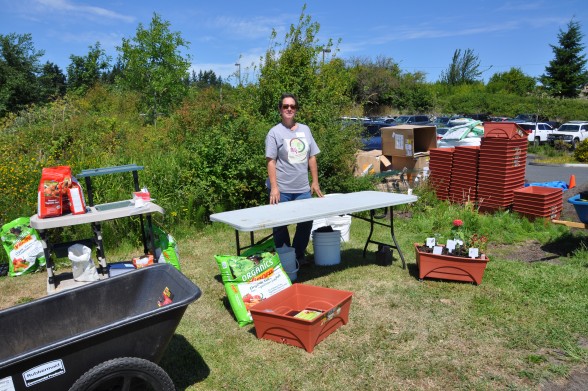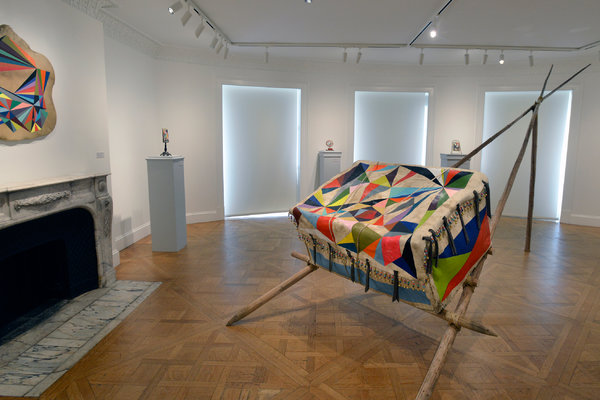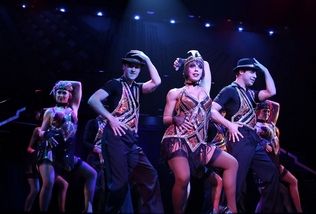By Wayne Kruse, Special to The Herald
That pink haze on the horizon means the odd-year humpy invasion is nearly here, and it’s time to start gearing up before the good stuff is all gone. The first pink salmon in the eastern Strait of Juan de Fuca was caught July 3, out of the Ediz Hook public ramp in Port Angeles, and larger numbers quickly followed.
By last Sunday, state Department of Fish and Wildlife creel samplers tallied 146 anglers at the hook with 151 pinks. The catch also included 28 chinook and 8 coho.
Gary Krein of Everett, owner of All Star Charters (425-252-4188), said fishable numbers of pinks should be available on the west side of Possession Bar/Double Bluff somewhere between August 1st and 5th, and on this side — Brown’s Bay and the shipwreck — between the 8th and 12th.
Stock up on white flashers, standard 11-inch, or similar dodgers, and pink or red mini squids tied on double 4/0 hooks. Plan on using 24 to 26 inches of leader, Krein said, and a very slow troll.
Cabela’s Tulalip store has scheduled a full range of free pink salmon seminars this weekend, as follows (the times apply both Saturday and Sunday):
- Fly Fishing for Pinks, 11 a.m., hosted by Mike Benbow.
- Successful River Techniques for Pinks, 12:15 p.m., hosted by guide Jennifer Stahl.
- Catching Pinks with Dick Nite Spoons, 1:30 p.m., hosted by Captain Jon Blank.
- Puget Sound Pink Fishing, 2:45 p.m., hosted by Captain Nick Kester (on Sat.), and Captain Ryan Bigley (on Sun.).
- Tying Your Own Pink Salmon Jigs, 4 p.m., hosted by Cabela’s Outfitters.
Also, check out free demonstrations on smoking your catch, kids’ casting, and a lot more.
For a full schedule of pink salmon and archery hunting seminars coming up, visit www.cabelas.com/tulalip, or call 360-474-4880.
Baker Lake sockeye
The hugely popular sockeye fishery on Baker Lake opened yesterday, and was too new at time of writing to produce any meaningful results. Prior to the opener, however, Kevin John at Holiday Sports in Burlington (360-757-4361) predicted that this weekend could see enough of the highly-sought salmon in the lake to be worth an early trip.
John said that, through Sunday, some 2,617 fish had been trapped below Baker Dam, and 1,931 had been transported to the lake.
“Compare that to last year,” John said, “when there were only 600 or 700 in the lake at this point, so there may be enough biters on hand to make the first weekend fishable.”
The upper third of the lake is the traditional fishing area, north and/or east of the bend. John said the lake is a little colder this year, which would tend to keep the sockeye fairly shallow — at least until the fleet hounds them into deeper water. John said the bulk of the catch will probably come from 15 or 20 feet of water for the first couple of weeks or so, which means that a 6-ounce crescent sinker should get your gear into their faces about as well as a downrigger. That’s especially true when holding your speed down to the critical very slow troll.
Rig with a big ring “0” or “00” dodger, 8 to 18 inches of leader, bare red or black hooks, or a 1 1/2-inch pink hoochie. Add a small piece of shrimp and douse the works with shrimp oil.
The hoochie can be UV pink, John said, maybe dressed up with a smile blade or a red or pink size 8 or 10 Spin N Glo. John likes dodgers in UV white, UV purple haze, or 50-50.
“The two-pole endorsement on your license is legal on Baker and a good idea,” John said. “these are school fish and when you find ’em, you need as much gear in the water as possible.”
He said that the saltwater “boat limit” is in effect, meaning basically that the guy who still hasn’t boated his limit can continue to fish everybody else’s rods.
Check out the current trap counts at http://wdfw.wa.gov/fishing/salmon/sockeye/baker_river.html.
Lake Wenatchee sockeye
The first sockeye of the year passed Tumwater Dam on the Wenatchee River Monday, according to state biologist Travis Maitland, signaling the start of the Lake Wenatchee run. Maitland said predictions are for fewer fish this year than during the banner 2012 season (over 66,000 fish at Tumwater), but he still is hopeful of something in the 44,000 to 50,000-fish range, which would be a solid run and which would allow a recreational fishery.
Last year’s excellent season started with a three-fish daily limit, but that was bumped up to five fish in a total sport harvest of over 12,000 sockeye.
Maitland said he should have enough hard data from the dam counts by late next week to come to some decision on the possibility of a fishing season. If a season is announced, he said, it would probably open in early August.
San Juan chinook
The first week of summer salmon fishing in the San Juan Islands has been much better than what anglers found there last year, according to Kevin John at Holiday Sports in Burlington. It’s off to a great start, he said, particularly inside Rosario Strait in such hot spots as Decatur Bay, Thatcher Pass, Reef Point, Eagle Bluff and Obstruction Pass.
The kings are running 10 to 20 pounds and whacking gear such as Coho Killer and Kingfisher spoons in “whie lightning” pattern; UV hoochies; AceHi flies; and herring or anchovies in a helmet.
On the July 1 opener, 123 anglers were contacted by WDFW personnel at the Washington Park ramp in Anacortes, with 42 chinook and 1 coho. On Sunday, at the same spot, it was 29 anglers with 8 chinook. At the Cornet Bay ramp on Sunday, 41 anglers had14 chinook.
Upper Columbia salmon
Not hot yet, but a few sockeye and summer chinook are being caught in the upper Columbia. The run will build in coming weeks, according to Anton Jones of Darrell & Dad’s Family Guide Service in Chelan, below Wells Dam and off the mouth of the Okanogan River above Brewster. For the kings, pull a Hot Spot flasher and a Super Bait stuffed with oil-pack tuna and coated liberally with your favorite sauce. Jones likes Pautzke’s Krill Juice.
For the sockeye, try Mack’s mini cha-cha squidders.
Ocean salmon
The latest state catch sampling, through June 30, showed Ilwaco as the hot spot on the coast, averaging better than a salmon and a third per rod, mostly coho. At Westport it was a half-fish per person, about 50-50 coho and chinook; and at LaPush, one fish per rod, split between coho and chinook.
Cowlitz River
Some 22 boat fishermen kept 6 steelhead last week and 20 bank anglers landed 3 adult spring chinook on the Cowlitz, all between the two hatcheries.
Middle Columbia
The Dalles pool has been offering hot fishing recently, according to Joe Hymer with the state. Boat fishermen averaged 2.5 walleye per person last week and over 6 bass when including fish released.

















